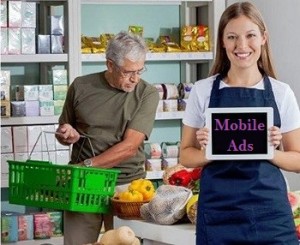The social network has been testing out a broad spectrum of smartphone marketing strategies.
Facebook has already revealed that it is launching and testing a dramatic range of different types of mobile ads in order to help to improve its lead generation abilities while reducing some of the struggles and challenges that marketers have faced.
The social network is already working with several unnamed brands to try out some of its bigger ideas.
Should these mobile ads prove to be effective, then it is likely that they will become regular marketing products that are available at Facebook. This type of opportunity could become very popular with a range of different kinds of marketers, including those in the financial, auto, insurance, and real estate industries. That is important to note as those are often players that have considerable budgets to back their marketing goals.
The mobile ads are designed to help to encourage interaction from consumers who view them.
 This is because the design of this mobile advertising would allow consumers to complete forms, sign up for newsletters, obtain price quotes, schedule appointments, book service calls, and complete other goals right there through the Facebook ads with two simple screen taps.
This is because the design of this mobile advertising would allow consumers to complete forms, sign up for newsletters, obtain price quotes, schedule appointments, book service calls, and complete other goals right there through the Facebook ads with two simple screen taps.
According to Facebook in a blog post that it made on the subject of this new mobile marketing strategy, “This helps avoid a lot of the pain points usually associated with filling out forms like having to leave one app and start a form in another app and having to enter all of their information from scratch. Just a few taps and people are done.”
This effort would make it possible for Facebook users to be able to complete forms by tapping on them in order to add their names, email addresses, and telephone numbers based on the information that they have stored in their profiles.
The social network went on to specify that the user will be able to edit their contact information so that only the information that they want to share will be sent to the advertiser. Furthermore, as an additional privacy feature, that information is never sent to the business until the user clicks the “submit” button in the mobile ads, specifically choosing to send it.
Within the first day of viewing, these smartphone advertisements generate considerable consumer response.
As mobile ads move from being in their early infancy toward the next phase in their maturity, many companies and marketers are still scrambling to try to find the right metrics to be able to measure their effectiveness.
A new report has now revealed that these smartphone and tablet ads can have a large affect on consumers.
The report was issued by NinthDecimal, a mobile intelligence firm based in San Francisco. What it revealed was that mobile ads that were having an impact on the behaviors of the consumers who saw them, and that this affect was on the rise. The study used data from 2014 in the second and fourth quarters . It measured advertisements displayed through Android and Apple apps, though not those that were displayed by way of web browsers. What was shown in The Mobile Audience Insights Report was that within the first day following the viewing of a mobile advertisement, there was an increase of 80 percent of in-store visits.
The report states that this helps to reveal more about the impact of mobile ads, which had previously gone unmeasured.
 In order to come to this conclusion, NinthDecimal both developed and used a Location Conversion Index, which it calls the first ever measurement of the real world behaviors that are the result of engagement over mobile advertisements. According to the company, it based its data on the results and actions of 1535 mobile users who were selected at random, on top of billions of different data points from campaigns that its clients ran on its platform.
In order to come to this conclusion, NinthDecimal both developed and used a Location Conversion Index, which it calls the first ever measurement of the real world behaviors that are the result of engagement over mobile advertisements. According to the company, it based its data on the results and actions of 1535 mobile users who were selected at random, on top of billions of different data points from campaigns that its clients ran on its platform.
What the outcome of the data analysis found, said the report, was that while the impact of mobile advertising can be a considerable one, it is not consistent from one industry to the next nor is it the same from one store to the next. Distance to the nearest store location also plays a role in the outcomes that were measured.
Interestingly, retail mobile ads, for example, were able to generate the greatest results for driving consumers into brick and mortar shops when those shoppers were already between 2 and 5 miles away from the store when they saw the ad. That represents a success rate that was 24 percent better than the average.
 This is because the design of this mobile advertising would allow consumers to complete forms, sign up for newsletters, obtain price quotes, schedule appointments, book service calls, and complete other goals right there through the Facebook ads with two simple screen taps.
This is because the design of this mobile advertising would allow consumers to complete forms, sign up for newsletters, obtain price quotes, schedule appointments, book service calls, and complete other goals right there through the Facebook ads with two simple screen taps.
 In order to come to this conclusion, NinthDecimal both developed and used a Location Conversion Index, which it calls the first ever measurement of the real world behaviors that are the result of engagement over mobile advertisements. According to the company, it based its data on the results and actions of 1535 mobile users who were selected at random, on top of billions of different data points from campaigns that its clients ran on its platform.
In order to come to this conclusion, NinthDecimal both developed and used a Location Conversion Index, which it calls the first ever measurement of the real world behaviors that are the result of engagement over mobile advertisements. According to the company, it based its data on the results and actions of 1535 mobile users who were selected at random, on top of billions of different data points from campaigns that its clients ran on its platform.